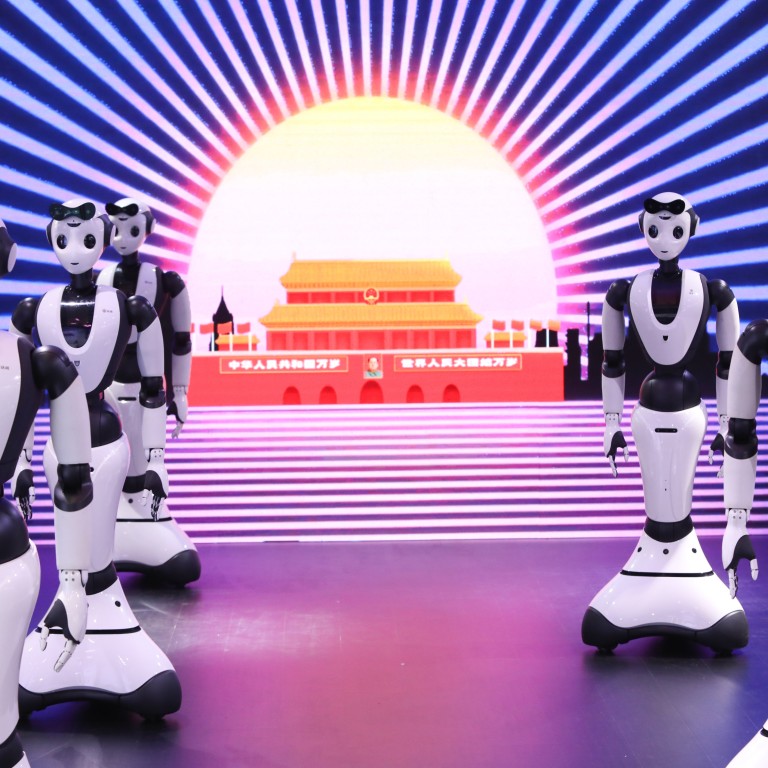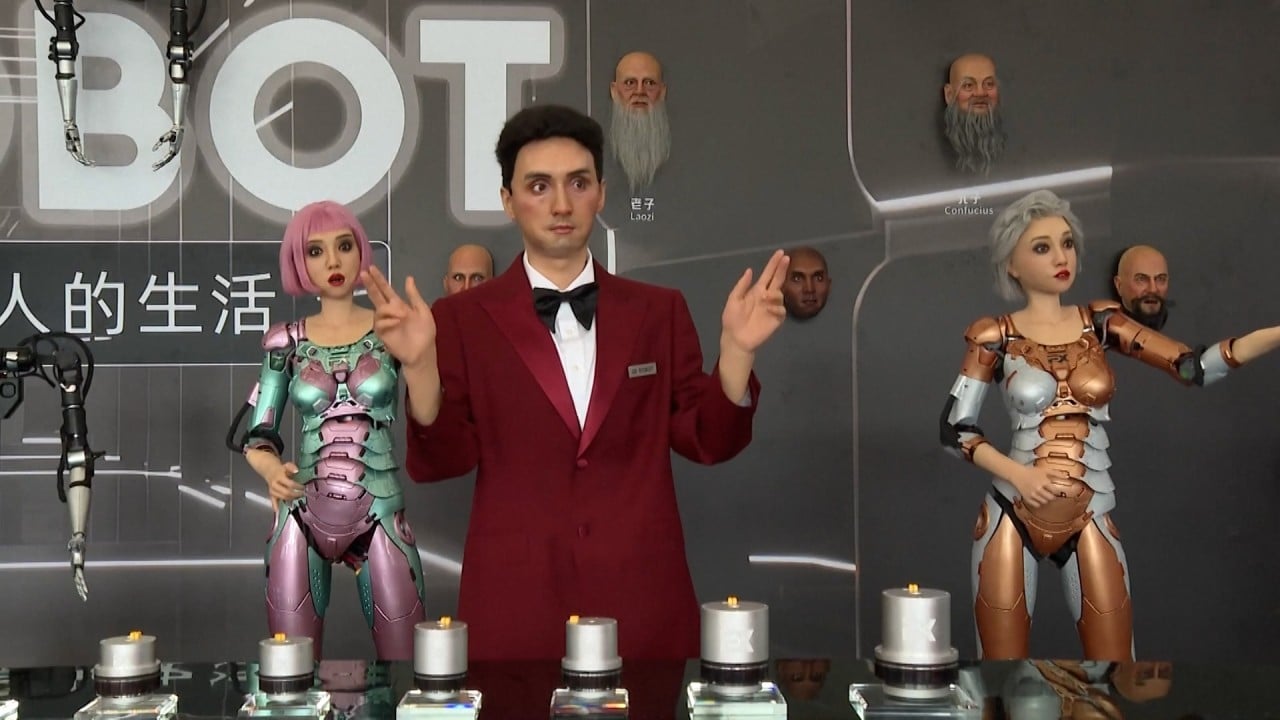
China sees rise of humanoid robots as ‘disruptive innovation’ that will spur economic growth
- Just months old, the Beijing Humanoid Robot Innovation Centre says it will release a humanoid robot body soon, but core components still appear out of reach amid tech war
- Ambitious plan announced as China is pushing for technological innovations and self-reliance in the face of tech hurdles erected by the West
A new robotics centre in Beijing has revealed intentions to release a general-purpose humanoid robot prototype that is being hyped as an “important symbol” of technological innovation and high-end manufacturing at a time when Chinese leadership is pushing for both against the backdrop of a tech war with the United States.
“It is the dream of every humanoid robot company to bring humanoid robots into thousands of households,” an unnamed source with the Beijing Humanoid Robot Innovation Centre was quoted as saying by the Beijing Youth Daily.
The centre was reportedly established late last year under a collaborative effort involving private and state-owned enterprises that manufacture robots. These were said to include Xiaomi, UBTech and Jingcheng Machinery Electric, along with the Institute of Automation at the Chinese Academy of Sciences.
Deemed a “person in charge”, the source said leading experts and R&D personnel from the robotics industry had been assembled at the centre, which was looking to create “a common technological platform, a public service platform and regulatory standards for the humanoid robot industry”.
“In the future, humanoid robots may enter automobile manufacturing, 3C manufacturing and other fields, thereby further improving the industrial manufacturing level,” the source said, with “3C” referring to computer, communication and consumer electronics.
However, details were scarce about the centre’s project, including when any prototype might be released, as it merely said “soon”.
To that end, the centre’s focus on humanoid robots – a technological convergence of artificial intelligence, high-end manufacturing, and new materials – is expected to help advance China’s self-reliance and home-grown innovation as competition with the US has ramped up in critically important tech areas.
This start-up wants to make humanoid robots with ChatGPT-like brains
Some American firms such as Tesla and OpenAI-backed Figure are working on humanoid robots. Tesla unveiled its Optimus prototype in September 2022, and CEO Elon Musk said that it was expected to be mass-produced in three to five years, priced at about US$20,000 each.
Meanwhile, Chinese enterprises such as Fourier Intelligence, UBTech Robotics, and Xiaomi are also tapping into the rapidly growing industry. And a November report by the Research Institute of People’s Daily Online said China was the second-largest holder of humanoid robot patents, with 1,699, trailing only Japan.
But research reports have pointed out that China’s domestic supply chains for the core components of humanoid robots remain a constraint, while overseas manufacturers dominate the global market.
“The humanoid robot industry chains abroad hold a first-mover advantage in terms of technological research and development, supply chain maturity, and market promotion, which makes them relatively more mature and advanced at this stage,” said a January report by the People’s Posts and Telecommunications News, a news publication affiliated with the Ministry of Industry and Information Technology (MIIT).
In a nine-page document on the humanoid robot industry in November, the MIIT laid out goals involving innovation, technological breakthroughs and the safe supply of core components that will lead to the mass production of such robots in China.
The ministry also said humanoid robots were on a path to becoming another type of “disruptive innovation”, like computers, smartphones and new-energy vehicles have been.
And China intends to turn the humanoid robot sector into “an important new engine of economic growth” by 2027, the ministry said.
By then, “a safe and reliable industrial supply chain system will be formed, an industrial ecology with international competitiveness will be constructed, and the comprehensive strength will reach the world’s advanced level”.
Local authorities in major cities, such as Beijing, Shanghai and Shenzhen, have also highlighted the humanoid robot sector in their recent development plans.
The capital Beijing established a 10 billion yuan (US$1.4 billion) robotics fund in January to build the city into “a world-leading highland for the humanoid robot industry”.
China’s robotic dog can shoot like a pro. What is the US doing?
But the People’s Posts and Telecommunications News conceded that while China was becoming more competitive in certain core components for humanoid robots, the world’s major manufacturers still came mainly from the US, Japan and Europe.
“In terms of algorithm development, China’s research and development capabilities have consistently remained at the forefront,” the publication said, “but attention is also needed on the development capabilities of fundamental frameworks and technical reserves.”
Xu Lijin, a delegate with China’s top advisory body, said at the recently concluded “two sessions” parliamentary meetings that high costs and the lack of application scenarios were hindering the industrial and commercial progress of the domestic humanoid robot sector.
Humanoid robot companies should collaborate with partners that will apply the products in the early stages of innovation, to expand the scope of using such robots, suggested Xu, who is also the chairman of a robotics company.


